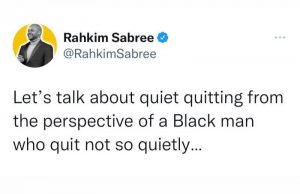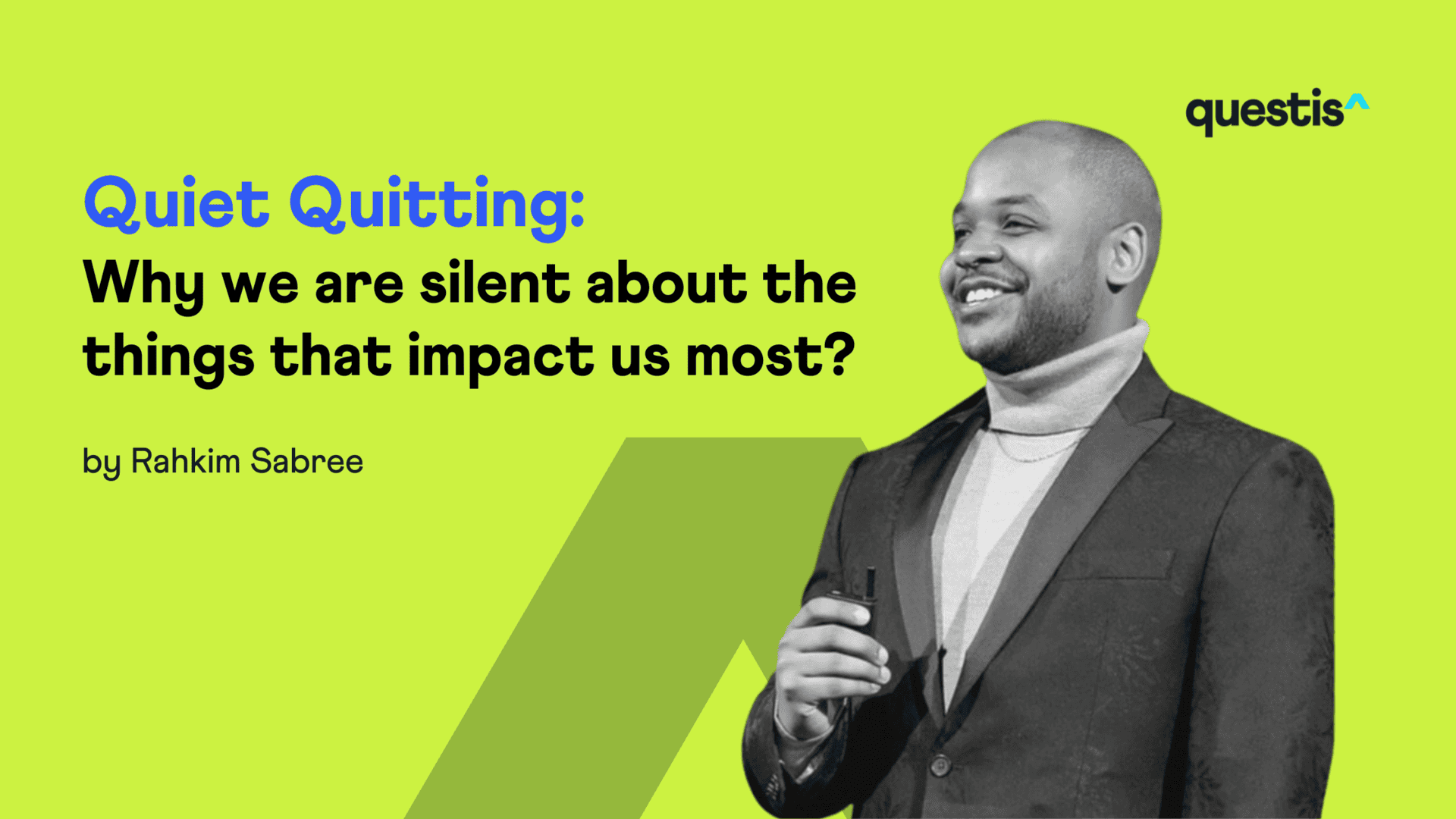According to Buzzfeed contributor Moriah Chance, “Quiet quitting is a trend that’s sweeping the nation. The basic principle is that employees are pushing back on unrealistic job expectations and reclaiming their time, energy, and job responsibilities.”
The quiet quitting trend has shined a spotlight not only on silent resistance but also on the privilege of certain groups in the workplace. Considered courageous by some, the amplification of this phrase is a silent insult to others.
This is well explained by Sara Rahmani, VP of People Experience and DEI at Chronus, in a recent article, “Minorities, especially those with intersectional identities, can’t always pull back. They’re already held to exceptionally high standards because of implicit bias, and pulling back from work might be seen as rejecting authority instead of boundary setting.”
The glamorization of this phenomenon generates mixed feelings for me personally. On the one hand, I support the enforcement of healthy work boundaries. On the other hand, I understand that there is a huge privilege in being able to disengage noticeably without it negatively impacting your current job, future opportunities, and your overall professional brand–especially as a person of color.

I shared a post on Linkedin that has since been referenced in publications like MSNBC and Business Insider. The purpose of this post is to highlight the differences in cultural norms and expectations of people of color in the workplace. It’s important to note that although those expectations might not ever be spoken, they certainly are felt.
Language matters
As a child, my mother implored me to make sure that when things like codes of conduct and handbooks were handed out in school, I should read them in their entirety. The reason was to know the rules and what was expected of me. It was also a defensive tactic so that I knew how to protect myself against and within policy issues should they arise. I took this approach in the various jobs I would hold throughout my career.
When I began building a personal brand I started to become conscious of the language around “conflicts of interest”. Specifically the fact that in some instances the language would state that it was the perception rather than evidence of a true conflict that was an issue. On multiple occasions, it was remarked that I must not have enough work to do since I had so much time to focus on outside pursuits. I would be asked to perform tasks that fell outside the scope of my job description often justified by language that read “other duties as assigned”. Despite completing my duties exceptionally, I was seen as not good enough, due to perception.
Quiet Firing
In response to quiet quitting, managers are engaging in a practice referred to now as quiet firing which simply put, involves creating a hostile enough environment that the employee wants to quit. It’s the passive-aggressive arm of what was referred to as “managing out” where managers would create a paper trail of events that stacked disciplinary action warranting an employee’s dismissal. While these terms serve to give a name and voice to issues that may have previously been blindly accepted, it also places a huge emphasis on the impact of cultural norms and expectations on disenfranchised employees.
When I think about my own experience, I could hardly imagine quiet quitting without an adverse reaction that would result in career suicide. Arguably a worse outcome than quiet firing or some immediate termination. Within Black and Brown communities especially, the idea that you have to work twice as hard to get just as far is taught and thought of when it comes to how we show up in the workplace. But it’s not just limited to our internal beliefs; I’ve seen in practice Black employees who were twice as good get only half as far as non-Black peers.
Employee Engagement
Employee engagement could solve the clandestine nature of the quiet quitting/ quiet firing cycle. Employees need safe spaces to share their difficulty establishing boundaries and understanding employer expectations–like my mom taught me to do at an early age.
Take Questis Communities, for example, which offers group coaching and peer-to-peer support in groups based on lived experiences, goals, and identities. Through this type of engagement, employees can begin to connect deeper through advocacy which gives them purpose and peace in their working environment. Questis can also provide insight for leaders into trends and variables that contribute to quiet quitting so that bullying environments that promote quiet firing don’t exist therefore retaining talent and saving on recruiting costs.
Today’s workforce demands greater levels of understanding and flexibility in the pursuit of personal and professional goals. A happy employee is an engaged employee.
About Rahkim Sabree
 Rahkim Sabree, CFEI is an author/columnist, speaker, and financial coach focusing on the pathways between financial literacy and financial empowerment. Rahkim is the author of the bestselling book “Financially Irresponsible” and has been published in Business Insider, The Grio, Black Enterprise, Entrepreneur, CEO World Magazine, and more. He can be reached via his website at www.RahkimSabree.com.
Rahkim Sabree, CFEI is an author/columnist, speaker, and financial coach focusing on the pathways between financial literacy and financial empowerment. Rahkim is the author of the bestselling book “Financially Irresponsible” and has been published in Business Insider, The Grio, Black Enterprise, Entrepreneur, CEO World Magazine, and more. He can be reached via his website at www.RahkimSabree.com.
